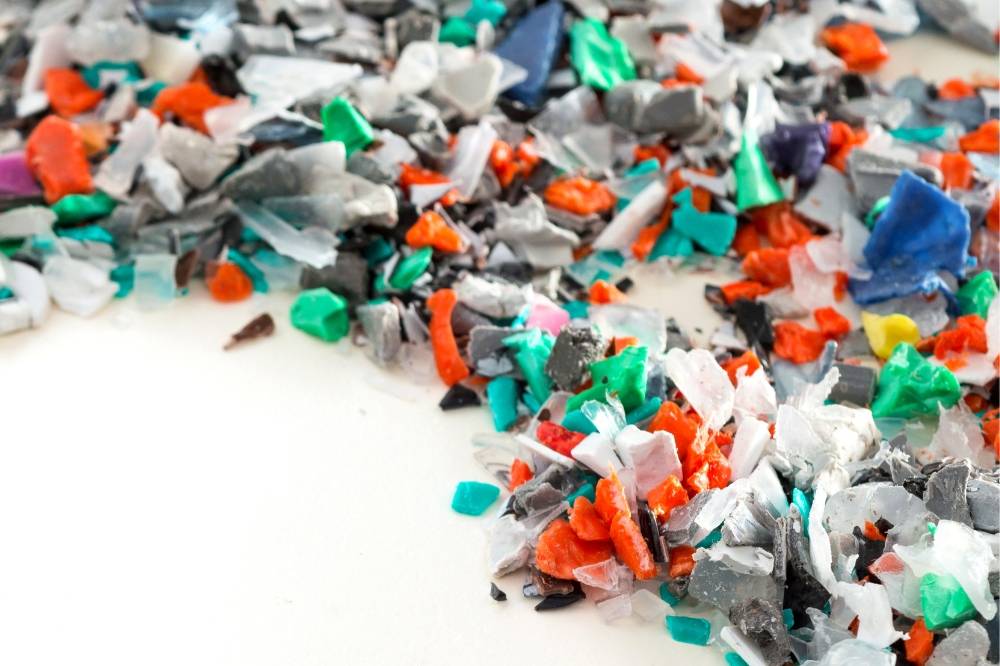What is the difference between plastic regrind and re-granulate?

In the field of plastics recycling, plastic regrind and re-granulate represent two different forms of secondary raw materials with varying degrees of technological processing.
What is plastic regrind?
Plastic regrind is produced through mechanical processing of plastic waste, most often by crushing and grinding production leftovers or plastic waste.
Properties of plastic regrind:
- Simple and energy-saving production
- Use as input raw material for further recycling processes, or for less demanding applications
What is re-granulate?
Re-granulate is a more advanced form of recycled plastic. It is produced by heat treatment of plastic regrind, where it is melted, filtered, degassed, and then granulated. The result is regular granules (rolls or lentils).
Properties of re-granulate:
- High homogeneity and purity thanks to thorough processing and the possibility of adding additives (e.g., dyes, stabilizers).
- Higher energy intensity compared to regrind production.
- Ideal replacement for primary granulate - suitable for the production of new plastic products
Comparison table
|
Feature |
Plastic regrind |
Re-granulate |
|
Production |
Mechanical crushing of plastic waste |
Heat treatment of plastic regrind |
|
Cleanness |
Lower, variable according to input material |
High, through filtration and homogenization |
|
Use |
Basic raw material, intermediate stage of recycling |
Direct material for the production of new products |
|
Energy intensity |
Low (mechanical processing) |
Higher (thermal extrusion and drying) |
When should crushed plastic be used, and when is re-granulate more appropriate?
The plastic regrind is suitable for:
- Pre-treatment before the re-granulate production
- less demanding applications where high purity or precise properties are not required
Re-granulate is ideal where:
- high quality and repeatable properties are needed
- we want to fully replace the primary granulate
